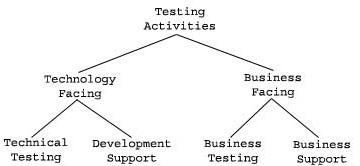As Mike Cohn points out in Advantages of User Stories for Requirements, writing requirements documents with the phrase: “the system shall” causes us to lose focus on the user. We aren’t writing something to satisfy the system, we are writing something to satisfy the needs of the user, the customer.
Maybe this is another encapsulation endeavor. Is using this kind of language an implicit (or unconscious) attempt to hide the complexity of working with people into a simplified interface called “the system”? As we encapsulate the needs and wants of the user within this black box, is this system an accurate representation of the customer’s original knowledge? Does it meet their needs? How can we tell?
What do we lose when we shift focus from being customer-obsessed to talking more in terms of the system? It’s one thing to satisfy a system, and quite another to satisfy the customer. Language is very important, and if the “user” or “customer” are being talked about less on a project, there is a danger that we may think about the customer and their needs less. Furthermore, if we refer less to the user and more to the system we are developing when looking at requirements and needs, we dehumanize the user. The context of satisfying a requirement at the system level and at the customer level can be two very different things. Customers worry about how usable the software is, sometimes more so than the fact that the requirement exists in the system concept.
If we dehumanize the user, why shouldn’t the user dehumanize us? Instead of a development relationship based on collaboration focused on meeting the needs of the customer, we run the risk of becoming commodities to each other. What’s to stop the customer from treating us as a commodity if we treat them as one? If communication breaks down and we dehumanize each other, how can we meet the needs of the customer? How can they be sure their needs are met? Can we trust each other?
Even when we use methodologies that are based on collaborating with the customer, we should be careful not to force them into a position they aren’t comfortable with. A key for overcoming technical bullying is effective communication. We need to treat the customer as a human being who has needs and feelings like we do, and communicate with them. With proper two-way communication, we can make sure they understand what we are doing, and enable them to ensure we are meeting their needs. Words are important, and listening to the customer is even more important. If we really listen, we can find out what the customer needs and develop that. The customer needs to be satisfied, not necessarily the system. Our language should reflect this.
